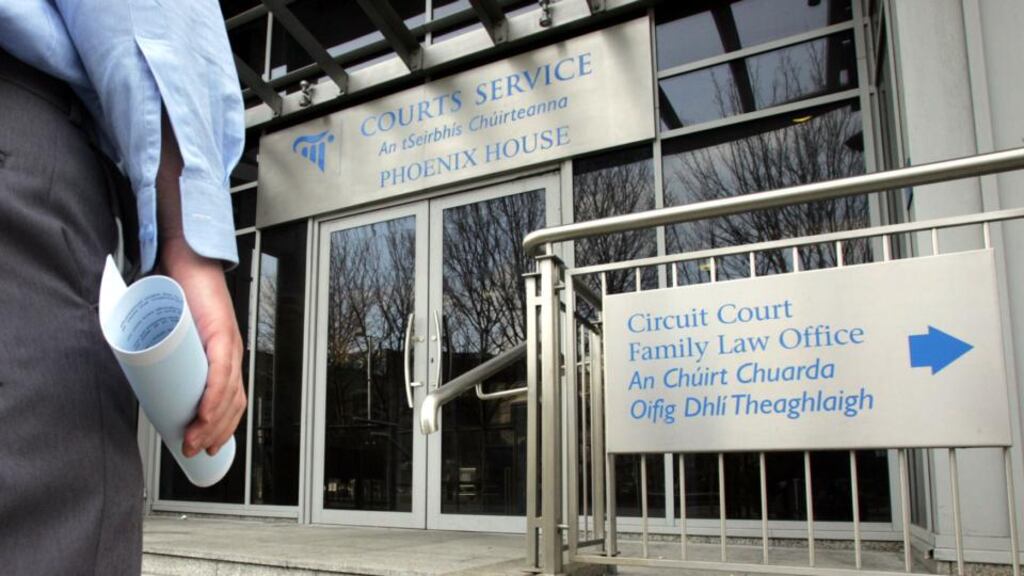The relaxing of the in camera rule by Minister for Justice Alan Shatter from last Monday means the media can cover court proceedings in family law and childcare cases with certain restrictions.
The aim is to shed some light on proceedings that had previously, apart from the work of the family law reporting project, been largely an unknown quantity.
But it seemed, at least for the first few days, that the courts were a little stunned by the sudden glare of attention.
The new law was passed by the Oireachtas last July and the courts were aware it would be coming into force, but it had been expected that protocols for media coverage would be agreed first.
However, last Sunday night Mr Shatter announced the law would begin “with immediate effect”.
Under it, the media are allowed to attend hearings and report on them, provided they do not identify any of the parties. However, a judge has the right to decide to exclude the press or to impose restrictions on reporting some of the evidence.
Judges are entitled to make such decisions either of their own volition or following an application by a party in the case.
Full lobby
On Monday, the lobby of the Dublin Circuit Family Courts in Phoenix House, Smithfield, was filled with solicitors, barristers and their clients. Unlike other courts, parties can't sit in a family courtroom and listen to other cases while they await their own. Instead, the registrar calls one case at a time and only the parties involved can be present for proceedings.
Court 32 was empty, save for the registrar. I introduced myself, produced my press card and was asked to wait outside for a moment. Shortly afterwards a member of the Courts Service staff politely diverted me to the court of Judge Carmel Stewart and introduced me to the registrar there.
A divorce case was about to begin and when counsel became aware of the media presence, there was a hasty search for copies of the law and then an application to the judge to have media excluded.
The grounds for the application included that the case had already begun and coverage might prejudice one party, and also that commercially sensitive information would be disclosed. Judge Stewart said she had just become aware the legislation had commenced. She asked me some questions before ruling that, given the commercial sensitivity, the media should be excluded.
At a third attempt, in the court of Judge Sarah Berkeley, I was allowed to stay for a first sample of family law in operation.
In the afternoon, a sign on the door of the Dublin District Family Courts in Dolphin House, East Essex Street, warned reporters and photographers not to enter the building. The ground floor waiting area was packed and a member of staff accompanied me upstairs to Court 47, where I supplied my press card and was welcomed to the court of Judge Sinéad Ní Chúlacháin.
Many of the cases there involved lay litigants and there was little resistance to the presence of the media, though the judge did stop mentioning it after one man quizzed me about what I might write.
Judge Ní Chúlacháin dealt patiently with the stream of cases before her – the bickering over maintenance, the heartbreaks over access to children, the amicable arrangements and the matter-of-fact descriptions of domestic violence.
The following day, in Court 20 Dolphin House, the Child and Family Agency was seeking leave to extend orders for children in the care of the State. Judge Brendan Toale said the presence of a journalist would have to be brought to the attention of every party in every case before him.
Excluded
The agency applied to have media excluded from a case involving an adolescent on a waiting list for a secure care unit. Judge Toale refused, but afterwards went through the evidence and highlighted what could not be reported.
At the next case, a woman sat next to me and, putting her face close, forbade me from writing about her son. Counsel made an application to have media excluded on the basis it would be unduly distressing for his client. The judge considered how he might deal with such an application. Would he hear the evidence in private and then if it was not unduly distressing, hear it again in public?
He acknowledged that the media had no right of audience in the court, but he asked me to address him. He then heard submissions in private before ruling to exclude media as he was satisfied a media presence “might inhibit or cause undue distress to a party”.
In Court 49, at another childcare case, President of the District Court Judge Rosemary Horgan told counsel the media was “perfectly entitled” to attend. The agency was opposed to a media presence, but representatives of the parents involved supported it.
One of Judge Horgan’s central concerns was that not only should the identity of the children involved be protected from others, but they should also not be recognisable to themselves. She ruled against excluding media, but gave a list, post-evidence, of things that could not be reported.
By Wednesday, back at the Family Circuit Court all involved seemed more prepared for the media. But the approach of judges still varied.
Progress
Though counsel suggested exclusion from some cases on grounds including that the couple did not want a media presence, there was no exclusion from any cases in one court, while in another a judge invited parties to tell her if they had "any difficulty giving evidence in the presence of journalists".
Still, progress has been made this week. And back across the Liffey at Dolphin House, the “no media” notice is gone from the door.














